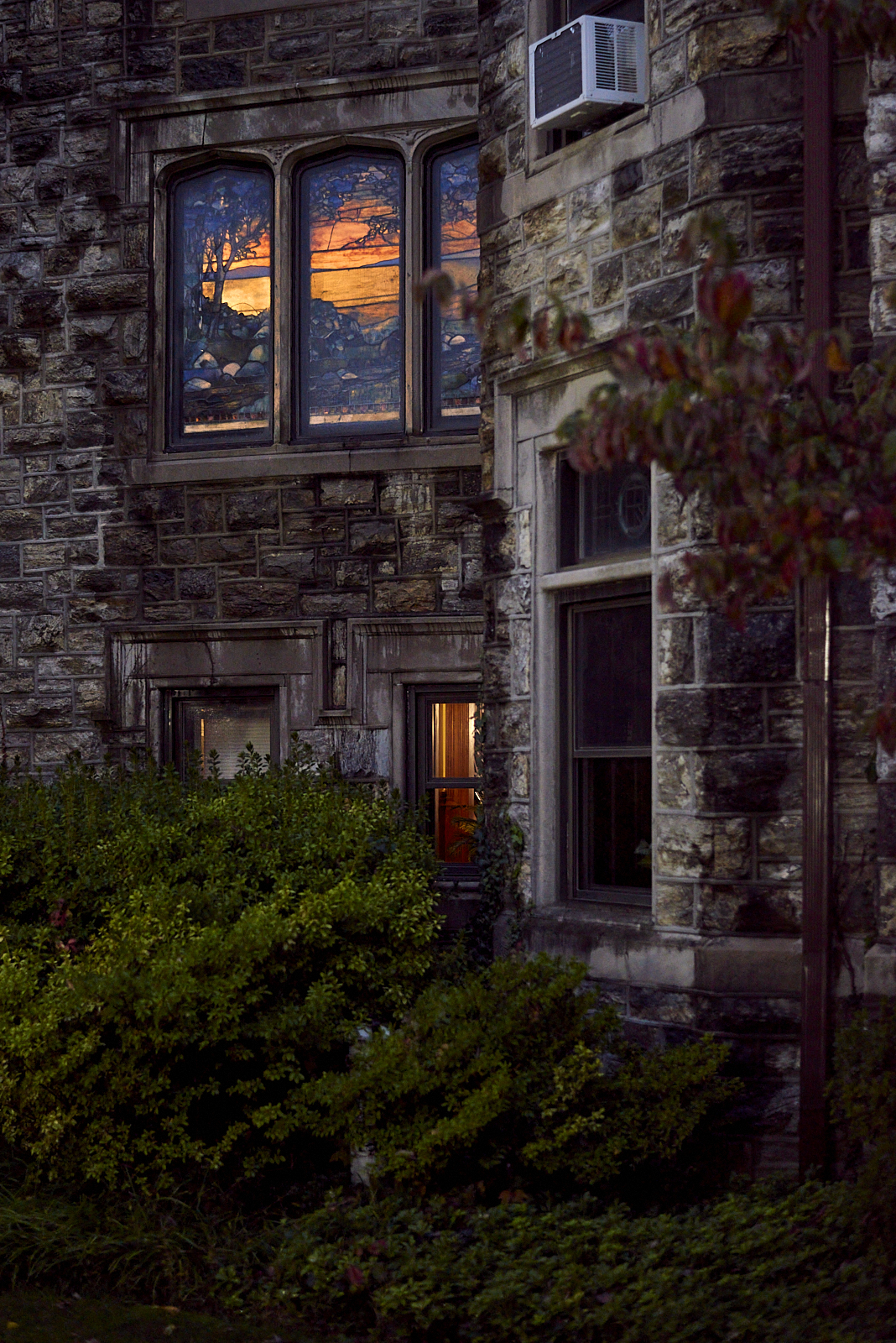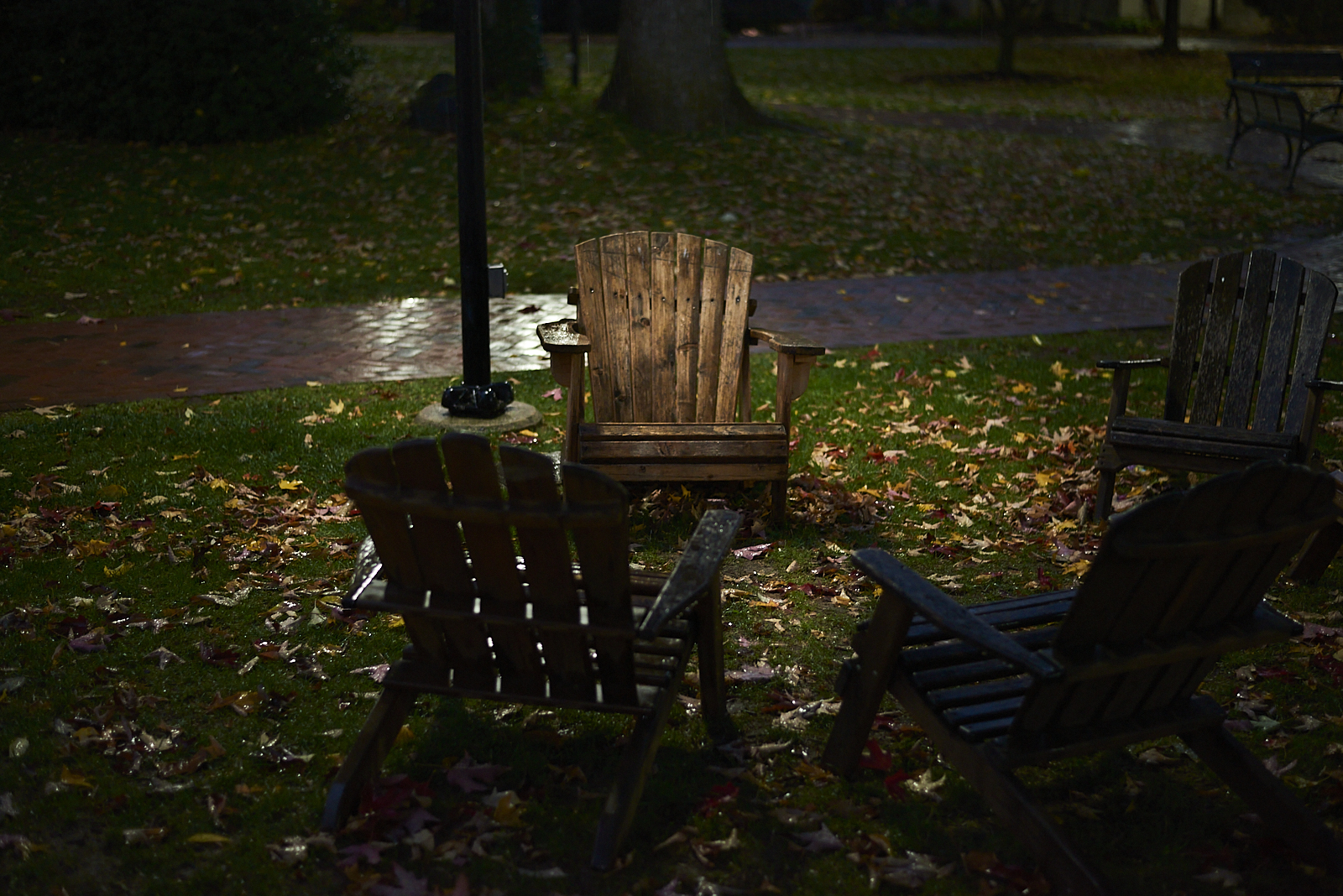How many of these former estates get recycled, finding new life as (often it seems) institutions of some sort? The opulence and exclusivity of a century ago transmogrified into some (quasi-)utilitarian and occasionally public space. The other afternoon, rainy and cold, I wandered around one such place. If you look closely at the main house, you will see traces of its regal past, in the stonework, the (repurposed) porte-cochère, the expansive entry and stairway. On the landing, original Tiffany windows glow in the evening’s gloom, incongruous next to the window A/C unit next to it.

Beyond the main house and stately old trees, there is little left of the estate. There’s little reason to manicure the lawns or tend the gardens. Students don’t tend to pay much attention to gardens and lawns, nor do teachers. The grounds are now kept practical and utilitarian. Fountains, statues, and sundials, common on estate grounds, have been replaced by chairs and benches. Four sit empty in the drizzle and faint glow of the lamp.

In some twisted way, I guess we can consider this a form of “recycle and reuse” bantered about so often these days even if it fails to “reduce” anything.